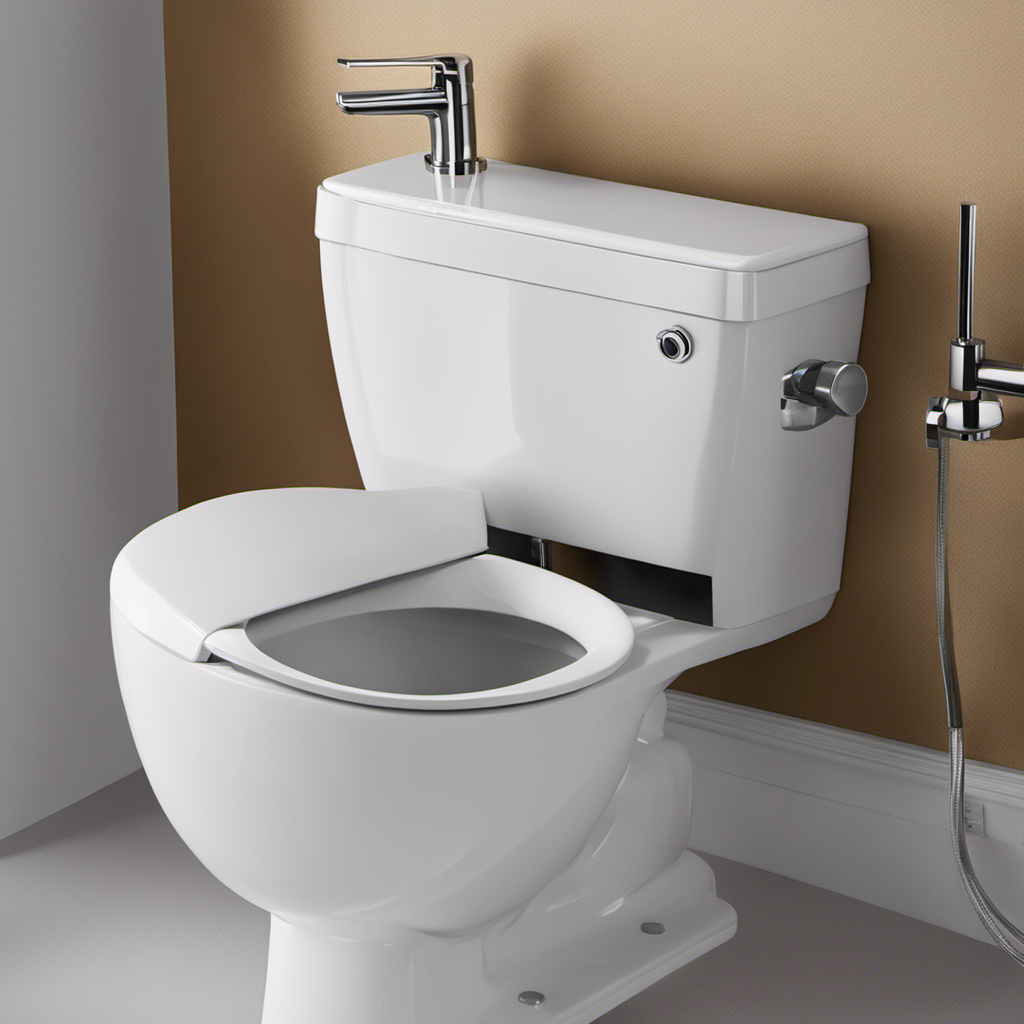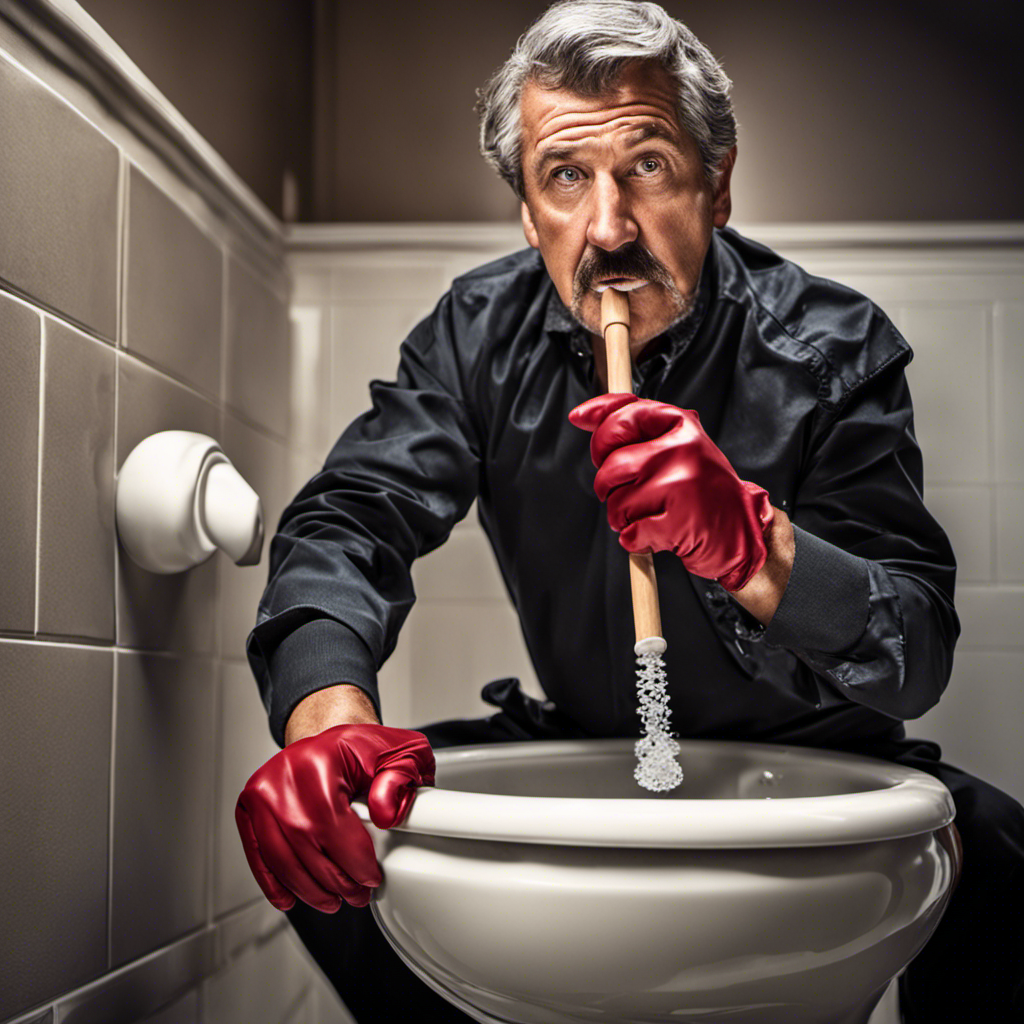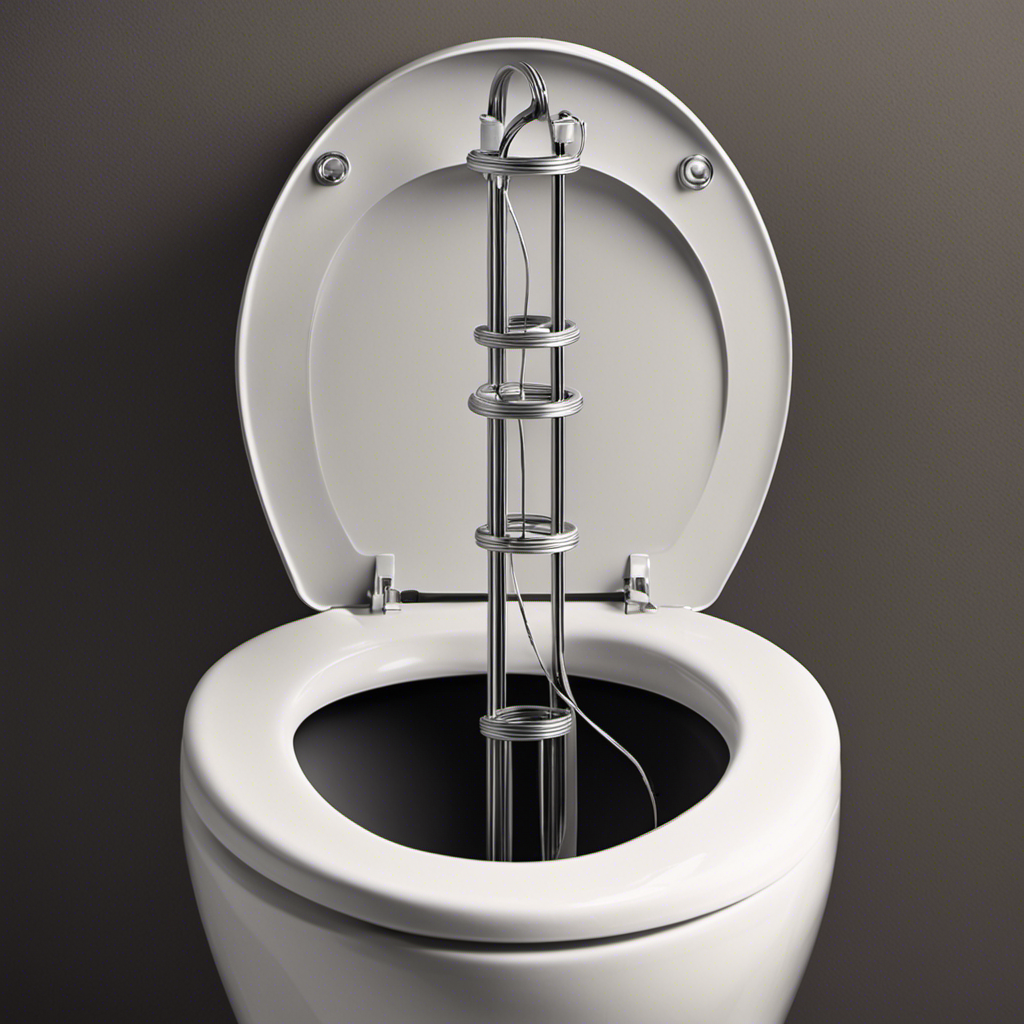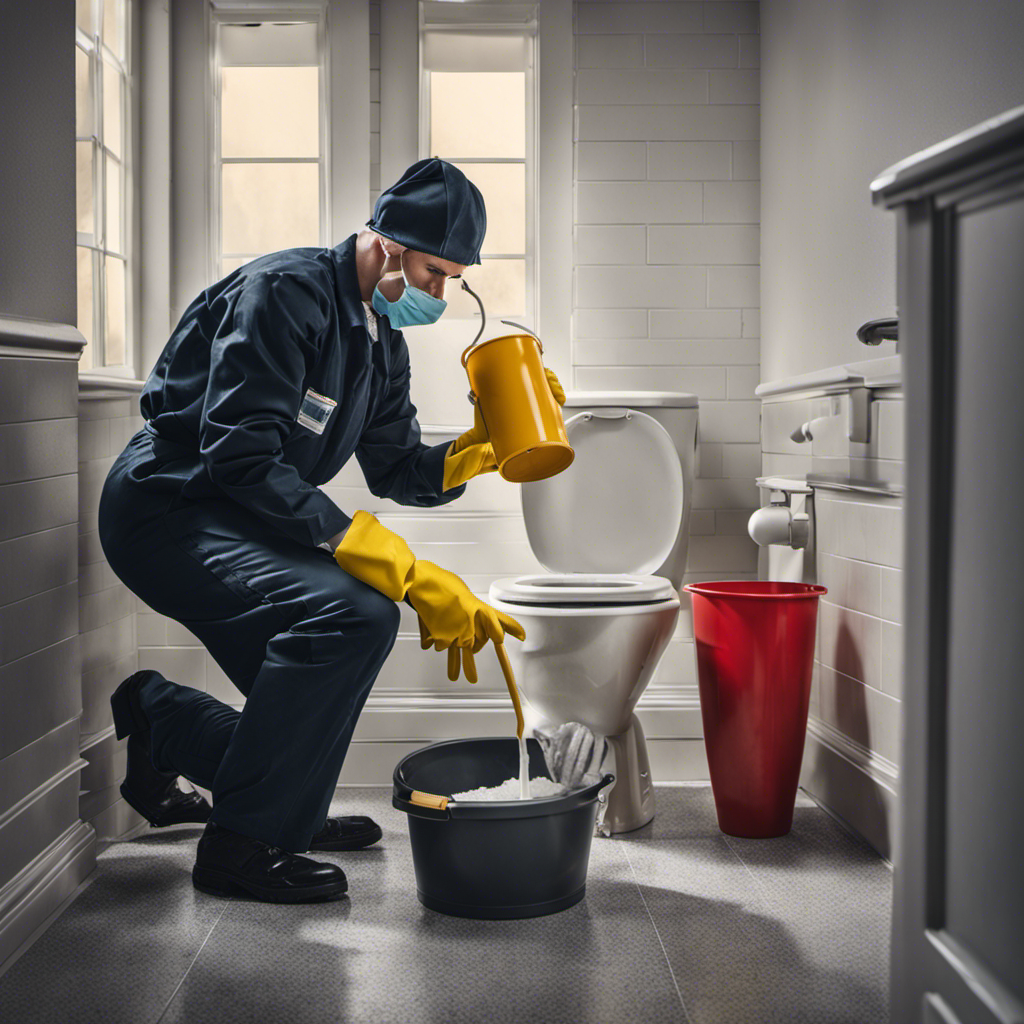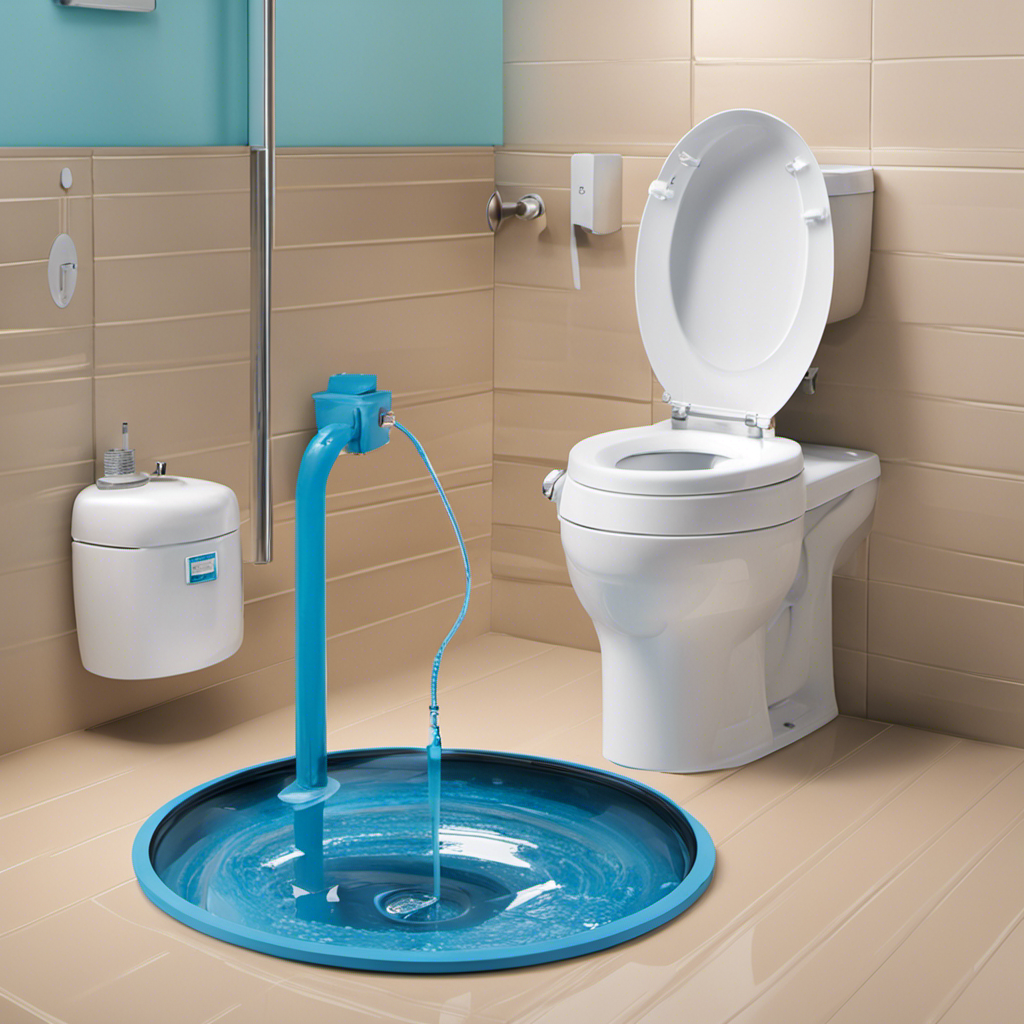Did you know that a running toilet can waste up to 200 gallons of water per day?
As someone who has dealt with this frustrating issue before, I understand the importance of finding a solution quickly.
In this article, I will guide you through the step-by-step process of fixing running water in your toilet.
By following these simple instructions, you’ll be able to save water, reduce your utility bills, and restore peace to your bathroom in no time.
Let’s get started!
Key Takeaways
- Troubleshooting water flow and toilet mechanics can help identify the source of running water in a toilet.
- The flapper valve is a common culprit for running water, and it should be inspected for wear or damage.
- The fill valve may need to be adjusted or replaced if the water level in the tank is too high, causing continuous running.
- Properly adjusting the water level in the toilet tank can prevent issues with the fill valve and save water.
Identifying the Source of the Running Water
To fix the running water in the toilet, you’ll need to start by identifying the source of the issue. Troubleshooting water flow and toilet mechanics can help pinpoint the problem.
First, check the water level in the tank. If it’s too high, the water may be overflowing into the toilet bowl. Adjust the float valve to lower the water level.
Next, inspect the flapper valve. If it’s not sealing properly, water will continuously flow into the bowl. Replace the flapper if necessary.
Another common issue is a faulty fill valve. If the valve is not shutting off completely, water will keep running. Adjust or replace the fill valve as needed.
Checking and Adjusting the Flapper Valve
The first step in addressing the issue is making sure the flapper valve is properly checked and adjusted. This is a common culprit when dealing with running water in toilets.
To troubleshoot the float mechanism, start by lifting the lid of the toilet tank and observing the flapper valve. Look for any signs of wear or damage, such as cracks or warping. If you notice any issues, it’s time to replace the worn-out flapper.
Replacing the flapper can easily be done by disconnecting the old one from the flush valve and attaching a new one.
After replacing the flapper, make sure to adjust it so that it sits snugly against the flush valve seat when the toilet is not in use.
Doing these steps should help resolve the running water issue and restore proper functionality to your toilet.
Inspecting and Fixing the Fill Valve
When dealing with a fill valve issue, you might want to check if the water level is too high in the toilet tank. A high water level can cause the fill valve to continuously run, leading to a waste of water and potentially higher water bills.
To troubleshoot the fill valve, start by adjusting the water level to the recommended mark on the tank. If this doesn’t solve the problem, it may be necessary to replace the fill valve altogether.
Before replacing the fill valve, ensure that the water supply to the toilet is turned off. Then, remove the old fill valve and install a new one according to the manufacturer’s instructions. This should resolve any fill valve issues and stop the constant running of water in the toilet.
Adjusting the Water Level in the Toilet Tank
Adjusting the water level in the toilet tank can help prevent issues with the fill valve and save on water consumption. Troubleshooting toilet tank issues requires a thorough understanding of water flow in the toilet tank.
The water level in the tank should be set at the recommended level, typically indicated by a line on the inside of the tank. If the water level is too high, it can cause the fill valve to constantly run and waste water. On the other hand, if the water level is too low, the toilet may not flush properly.
To adjust the water level, locate the adjustment screw on the fill valve and turn it clockwise to lower the water level or counterclockwise to raise it. By adjusting the water level correctly, you can ensure optimal performance and prevent leaks in the toilet tank.
Now, let’s move on to addressing common toilet tank leaks.
Addressing Common Toilet Tank Leaks
To prevent common leaks in the toilet tank, it’s important to check the condition of the flapper valve. This small, rubber piece is responsible for sealing the tank and preventing water from continuously flowing into the bowl. Here are four crucial steps to troubleshooting toilet leaks and preventing water waste:
-
Inspect the flapper valve: Look for any signs of wear or damage, such as cracks or warping. If the flapper is not sealing properly, it may need to be replaced.
-
Adjust the chain length: Ensure that the chain connecting the flapper valve to the flush handle is neither too loose nor too tight. A loose chain can prevent the flapper from sealing properly, while a tight chain can cause the flapper to stay open.
-
Clean the flapper valve and seat: Over time, mineral deposits and debris can accumulate on the flapper and valve seat, preventing a proper seal. Clean these components regularly to maintain their effectiveness.
-
Check the water level: Make sure the water level in the tank is not too high, as excessive water pressure can cause leaks. Adjust the water level by adjusting the float or fill valve.
Conclusion
In conclusion, fixing a running water issue in a toilet requires a keen eye and some handy skills.
By carefully identifying the source of the problem, checking and adjusting the flapper valve, inspecting and fixing the fill valve, and adjusting the water level in the tank, you can successfully solve the issue.
Remember, a running toilet is like a leaky faucet; it not only wastes water but also drains your wallet.
So, take charge and fix it like a seasoned plumber to keep your toilet in top-notch condition.
